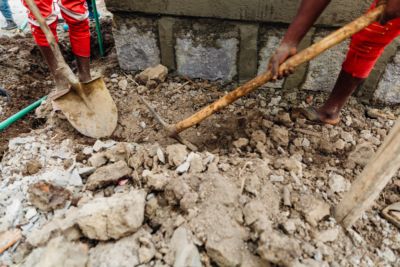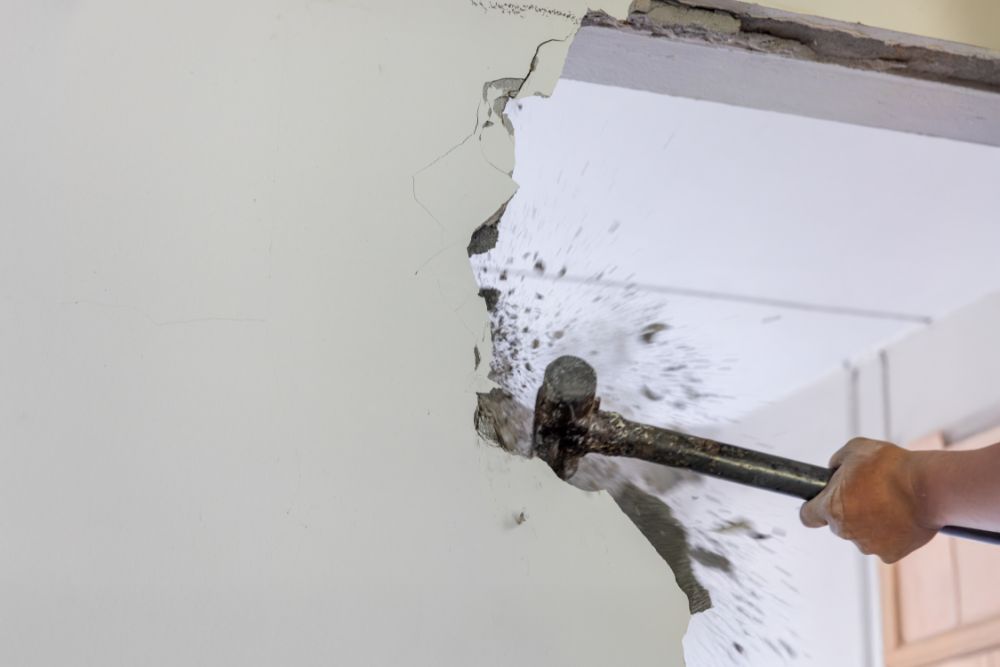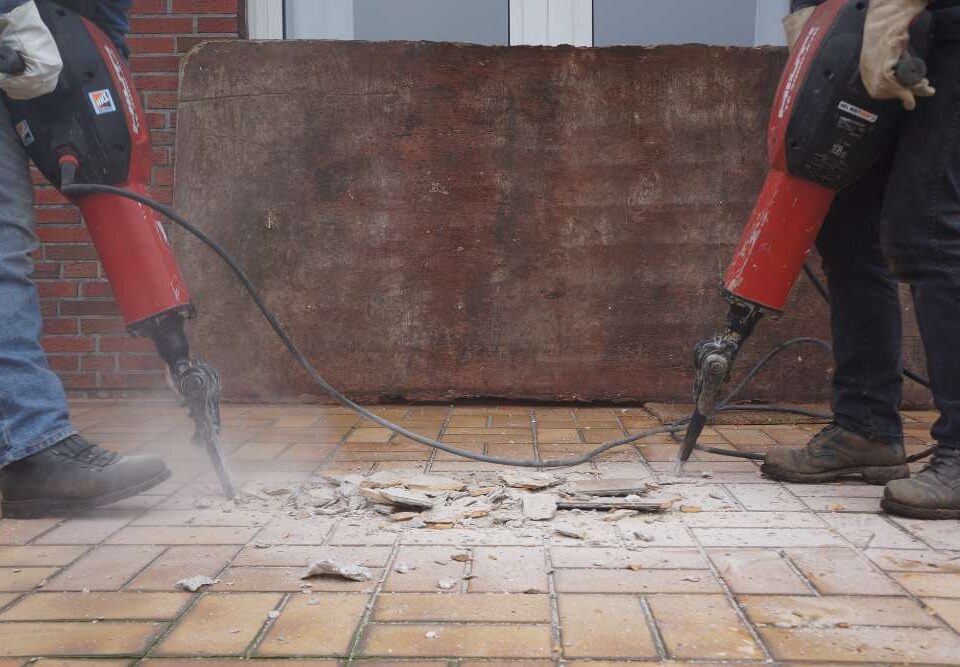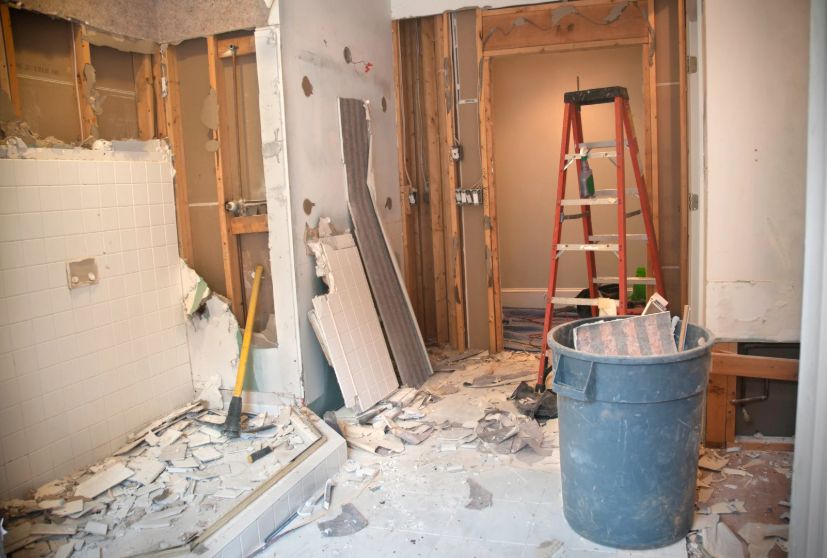
Why Demolition Cleanup Should Be Handled by Professionals
September 5, 2025
Demolition Cleanup After a Renovation What to Expect
September 7, 2025Tips for Tackling Concrete Removal with Ease
Concrete is one of the strongest materials used in construction, but when it comes time for renovations, repairs, or landscaping updates, it can quickly transform from an asset into an obstacle. Removing concrete requires more than brute force—it demands planning, the right tools, and a strategy that balances safety with efficiency. Whether you are breaking apart a patio, tearing out an old driveway, or replacing a damaged foundation, knowing how to approach the task makes a huge difference.
Concrete removal is often underestimated, yet it can define the pace and success of an entire project. A thoughtful approach saves time, reduces unnecessary strain, and prevents costly mistakes. By preparing thoroughly and tackling the job step by step, homeowners can make what initially seems daunting into a manageable process. This guide explores techniques, safety measures, and practical tips that simplify the challenge of concrete removal.
Understanding the challenges of concrete removal
Concrete removal poses unique difficulties compared to other demolition tasks. Its density and strength, the very qualities that make it desirable in construction, also make it resistant to breaking apart. A slab that appears modest in size can weigh thousands of pounds, meaning it’s not just about cracking the surface—it’s about managing debris safely and efficiently. Many first-time renovators underestimate how labor-intensive the job can be.
Beyond the sheer weight, hidden reinforcements like rebar or wire mesh complicate the process. Cutting through these materials adds another layer of difficulty that requires specialized tools. Even when the surface is successfully broken, transporting heavy chunks becomes a project on its own. Recognizing these challenges early helps set realistic expectations. Concrete removal isn’t impossible, but it demands preparation, patience, and a willingness to adapt when obstacles arise beneath the surface.
Choosing the right tools for the job
Concrete removal begins with selecting tools that match the scale of the task. For smaller projects such as garden pathways or steps, a sledgehammer and pry bar might be enough. However, larger slabs call for heavier equipment like jackhammers or power saws designed to cut through reinforced concrete. Renting or borrowing the right tools can save hours of exhausting labor while making the work more precise.
In addition to demolition tools, wheelbarrows, buckets, and sturdy shovels are essential for handling debris. Safety equipment also falls into this category—gloves, steel-toe boots, and dust masks prevent injuries and protect against flying fragments. Choosing tools is not just about brute strength but about efficiency and protection. The right combination minimizes mistakes, reduces fatigue, and keeps the process organized from start to finish. Investing in proper tools ensures concrete removal becomes achievable rather than overwhelming.
Preparing the worksite for demolition
Before a single swing of the hammer, preparing the area is a crucial step in successful concrete removal. Clearing away furniture, plants, or obstacles prevents accidental damage and creates space to maneuver heavy tools and debris. A clean and open worksite also reduces the risk of injury by eliminating tripping hazards that often slow progress.
Another vital part of preparation involves checking for hidden utilities. Concrete surfaces may conceal gas lines, water pipes, or electrical conduits. Accidentally striking one of these can turn a manageable project into a dangerous and costly situation. Marking off boundaries and setting up barriers also keeps dust and debris contained, protecting the surrounding environment. A few hours of preparation may seem like a delay, but it sets the stage for a smoother, safer, and more efficient demolition process that pays off in the long run.

Breaking concrete into manageable sections
One of the smartest strategies for tackling concrete removal is breaking the slab into smaller, manageable sections. Instead of attempting to lift or move one enormous piece, cutting the material into chunks makes it easier to handle, transport, and dispose of safely. This approach reduces strain on your body and minimizes the risk of accidents.
Scoring the concrete with a saw before using a jackhammer or sledgehammer provides a guide for cleaner breaks. Working methodically in sections helps maintain control over the process, preventing the unpredictable shattering that can occur with haphazard strikes. Smaller pieces also make loading debris into wheelbarrows or dumpsters more efficient. While it may seem like extra work at first, this step-by-step method ensures steady progress and keeps the project from becoming overwhelming. In concrete removal, patience and strategy often outweigh brute force.
Handling reinforced concrete with care
Not all concrete is created equal. Reinforced concrete, which includes embedded steel bars or wire mesh, adds another layer of complexity to removal efforts. While reinforcement strengthens a structure, it also resists simple breaking methods. Cutting through steel requires more advanced tools such as angle grinders, bolt cutters, or saws equipped with metal-cutting blades. Attempting to remove reinforced slabs without the right approach can quickly lead to frustration.
Dealing with reinforcement safely also means anticipating sharp edges or heavy pieces that may shift unexpectedly once cut. Proper protective gear becomes especially important when sparks, flying debris, and jagged steel are part of the process. Taking time to carefully separate the concrete from the reinforcement ensures cleaner removal and reduces disposal complications. Though reinforced concrete is tougher to manage, it is by no means impossible when handled with deliberate technique and adequate preparation.
Prioritizing safety during the process
Concrete removal is physically demanding, and safety must remain the highest priority throughout the project. Protective equipment like goggles, gloves, and steel-toe boots reduces the risk of injuries from sharp fragments or heavy impacts. Dust masks are equally essential, as concrete dust can irritate lungs and cause long-term health concerns if inhaled repeatedly. Simple precautions go a long way in keeping the process manageable and safe.
In addition to gear, safe lifting techniques are critical. Concrete chunks can weigh far more than expected, so lifting with the legs rather than the back prevents strain and potential injuries. Having a partner to assist with heavy sections also reduces risks significantly. Maintaining clear pathways for moving debris ensures that trips and falls are avoided..
Managing debris efficiently
Concrete removal doesn’t end with breaking slabs apart—it also involves dealing with the mountain of debris left behind. Without a disposal plan, the project site quickly becomes cluttered and unsafe. Organizing debris into piles or containers as you go makes the process more manageable. Wheelbarrows and heavy-duty bins prove invaluable for transporting pieces without unnecessary strain.
Disposal itself requires consideration. Many municipalities have specific regulations about how concrete should be discarded, and not all facilities accept construction debris. Renting a dumpster or arranging professional hauling services can simplify this stage. Recycling is also an option, as many facilities repurpose broken concrete into gravel or road base material.
Considering recycling options for concrete waste
Concrete waste doesn’t have to end up in a landfill. Recycling offers a sustainable alternative that benefits both the environment and your project. Broken concrete can be crushed into aggregate used for new construction, landscaping, or road-building materials. Choosing to recycle supports eco-friendly practices while reducing disposal costs. It transforms demolition debris into valuable resources rather than waste.
Recycling facilities often accept clean concrete, free from excessive dirt, rebar, or other materials. Sorting waste beforehand simplifies the process and increases the chance of acceptance. In some cases, contractors or junk removal services may handle recycling for you, saving time and effort. Beyond environmental impact, recycling demonstrates a forward-thinking approach to renovation. By diverting heavy materials from landfills, homeowners contribute to sustainability while still achieving their project goals.
Deciding when to call in professional help
Although many homeowners tackle small-scale concrete removal themselves, certain projects demand professional expertise. Large driveways, reinforced foundations, or areas close to utilities present challenges that go beyond DIY solutions. Professionals bring specialized tools and experience, allowing them to complete the job faster and with less risk of damage to surrounding structures. Their services often include hauling debris, eliminating one of the most exhausting parts of the process.
Recognizing when to call for help isn’t a weakness—it’s a smart investment in safety and efficiency. Attempting to manage oversized slabs or deeply embedded concrete without proper equipment can lead to injuries or delays. Professionals know how to assess the situation, apply the best methods, and leave the worksite ready for the next phase of renovation.
Maintaining momentum for the renovation ahead
Concrete removal is rarely the final goal—it’s the beginning of what comes next. Whether replacing a worn-out driveway, creating a new outdoor space, or renovating a foundation, removing concrete sets the stage for transformation. Keeping momentum after demolition is key to ensuring the overall project doesn’t stall. Organizing the site, removing debris promptly, and preparing the ground for new work maintains progress.
Momentum also comes from planning ahead. Having the next steps ready, whether it’s pouring new concrete, installing pavers, or building a new structure, prevents unnecessary downtime. Seeing the cleared space can be motivating, but without preparation, the energy of the project can fade. Concrete removal may be challenging, but it carries the excitement of possibility.
Conclusion
Concrete removal may feel like one of the toughest stages of a renovation, but with preparation, the right tools, and a step-by-step approach, it becomes a manageable process. By breaking slabs into smaller sections, handling reinforcement carefully, and staying mindful of safety, homeowners can tackle even demanding projects successfully. Debris management and recycling add responsibility to the effort, ensuring the project is both efficient and environmentally conscious. Knowing when to bring in professionals ensures that challenges don’t become roadblocks.
For homeowners looking to simplify cleanup and disposal, professional junk removal services provide a valuable solution. North Bay Junk Removal in Santa Rosa, CA, specializes in handling heavy materials like concrete with efficiency and care. Their team removes debris quickly, leaving your property clear and ready for the next phase of renovation. To schedule dependable junk removal services, call North Bay Junk Removal today at 707-478-6817 and move forward with confidence.




